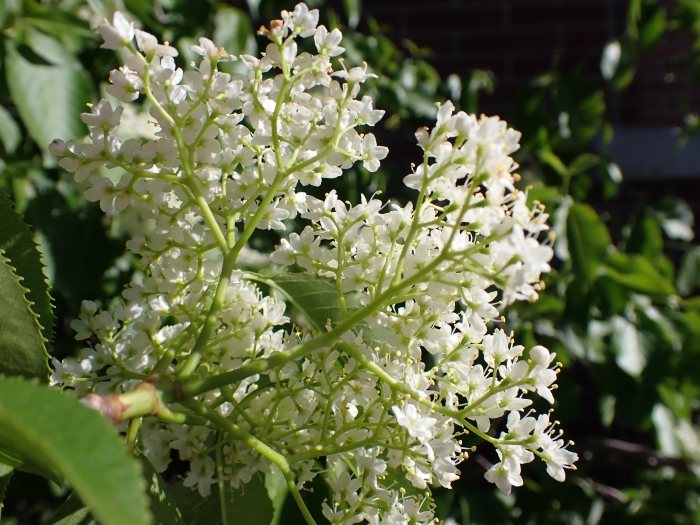Nannyberry
(Viburnum lentago)
Nannyberry (Viburnum lentago)
/
/

Matt Lavin
CC BY-SA 2.0







































































Estimated Native Range
Summary
Nannyberry is valued for its adaptability to a range of soil conditions, its attractive flowers, and its fall color when leaves turn to shades of red and purple. It is often used in naturalistic plantings, as a screen or hedge, and in rain gardens due to its tolerance for wet conditions. It prefers full sun to part shade and medium to moist soil with good drainage. While generally low-maintenance, it can be susceptible to leaf spot diseases and viburnum leaf beetle.CC BY-SA 4.0
Plant Description
- Plant Type: Shrub, Tree
- Height: 14-16 feet
- Width: 6-12 feet
- Growth Rate: Slow
- Flower Color: White
- Flowering Season: Spring
- Leaf Retention: Deciduous
Growth Requirements
- Sun: Full Sun, Part Shade
- Water: Medium
- Drainage: Medium, Slow
Common Uses
Bee Garden, Bird Garden, Border Plant, Butterfly Garden, Deer Resistant, Edible*Disclaimer: Easyscape's listed plant edibility is for informational use. Always verify the safety and proper identification of any plant before consumption., Fragrant, Hedges, Hummingbird Garden, Low Maintenance, Rabbit Resistant, Salt Tolerant, Showy Flowers, Street Planting
Natural Habitat
Moist woodland edges, stream banks, and swamp borders in the Northeastern U.S. and Southeastern Canada
Other Names
Common Names: Nanny-Berry, Sheepberry, Black Haw, Sweet Viburnum, Glansolvon
Scientific Names: , Viburnum lentago, Viburnum lentago var. sphaerocarpum, Viburnum lentago f. sphaerocarpum, Viburnum lentaginum, Viburnum ×vetteri, Viburnum lentago var. pyrifolium, Viburnum lentagoides,
GBIF Accepted Name: Viburnum lentago L.